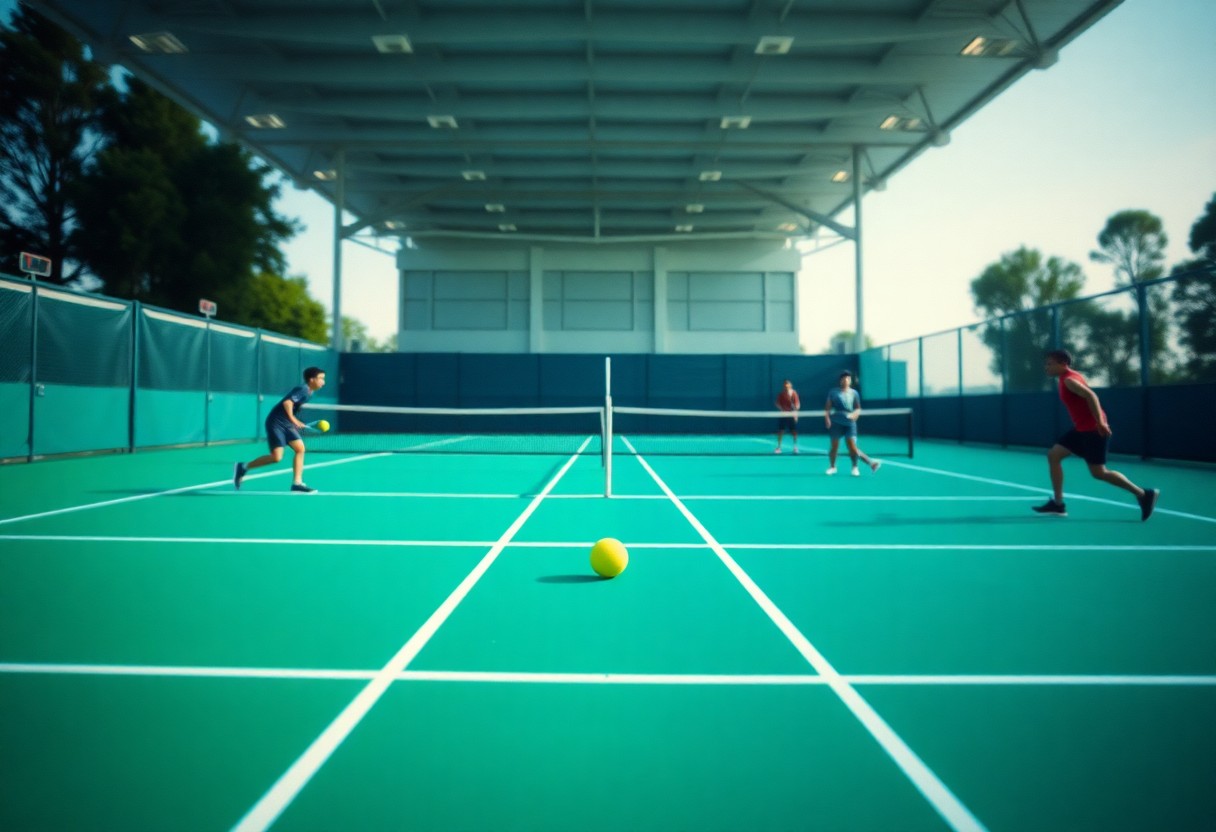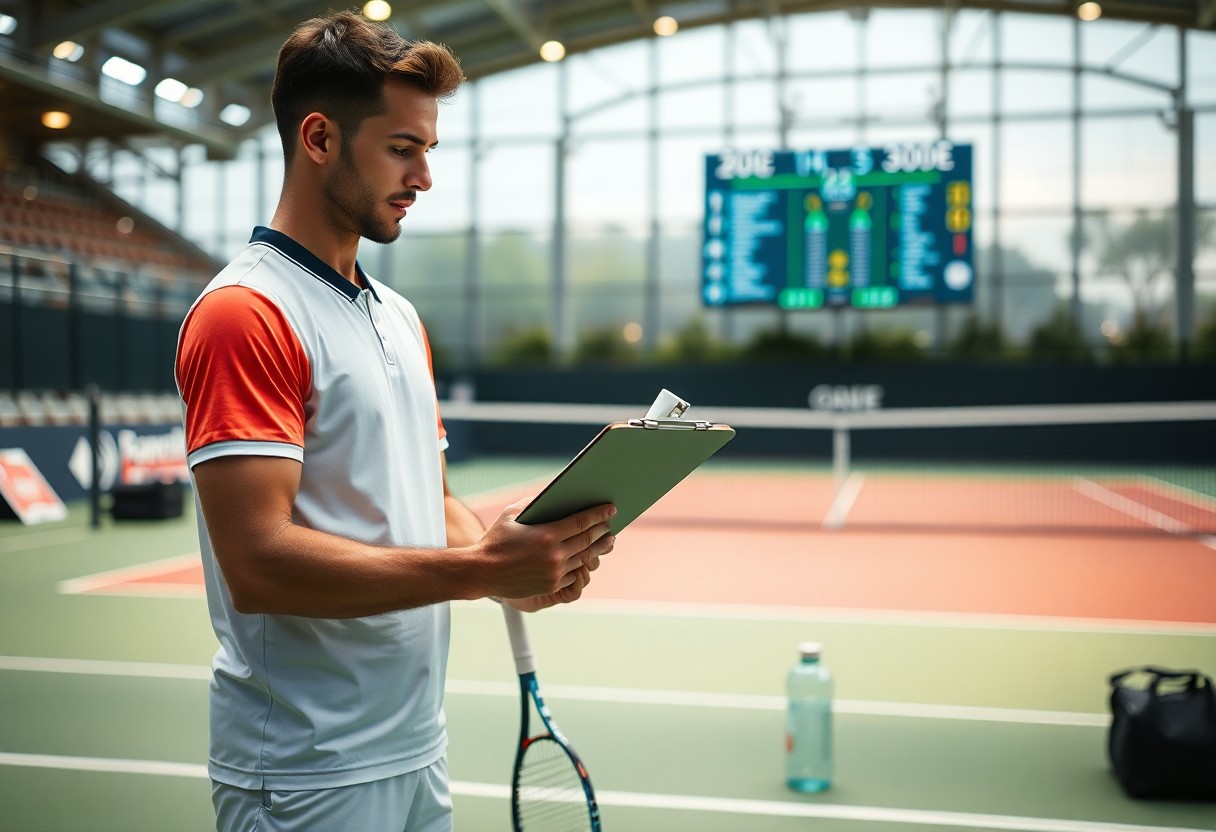Over the course of a match, understanding and implementing tactical strategies can be the difference between victory and defeat. By mastering positioning, shot selection, and mental resilience, players can outmaneuver their opponents effectively. This guide will explore into the key techniques and psychological strategies that elevate your game, enabling you to make calculated decisions that keep your opponent guessing and ultimately lead to success on the court.
Understanding the Types of Tennis Strategies
Mastering tennis requires knowledge of various strategies that can be employed to gain an advantage over your opponent. Both offensive and defensive play styles are vital, with specific tactics influencing match outcomes. Key strategies entail recognizing your opponent’s weaknesses and adapting your approach accordingly. For instance, using placement, spin, and speed can utilize the court’s full potential. The blend of these tactics can dramatically shift match momentum.
| Strategy Type | Key Elements |
|---|---|
| Offensive Play | Power, Aggression, Control |
| Defensive Play | Stability, Patience, Consistency |
| Serve Strategies | Placement, Spin, Speed |
| Net Play | Volleying, Reaction, Positioning |
| Counterplay | Anticipation, Defense, Adaptability |
Offensive Play
Offensive play focuses on taking the initiative and dictating the pace of the match. Players employing this strategy often use powerful serves and aggressive groundstrokes aimed at positioning their opponent for a quick point. This approach seeks to limit the opponent’s reaction time, allowing for short rallies and sharp angles that can exploit space effectively. The strategy revolves around controlling the match dynamics.
Defensive Play
Defensive play emphasizes absorbing your opponent’s shots and returning them effectively to stay in the rally longer. Players adopting this strategy often rely on consistent groundstrokes and court coverage, waiting for the opponent to make a mistake. By minimizing errors and maintaining composure, defensive players can turn aggressive plays into opportunities to counterattack. The focus is on patience, acknowledging that every point does not need to be won outright.
Defensive play is vital for disrupting an opponent’s rhythm. When executed correctly, it shifts pressure back onto the aggressor, often leading to opportunities for strategic counterattacks. Players might use high topspin shots or deep lobs to push their opponent back, giving themselves time to reposition. Successful defensive tactics hinge on a player’s ability to read the court and anticipate shots, allowing for optimal shot selection that can turn the tide in their favor.
Essential Tips for Tactical Tennis
Enhancing your tactical tennis skills revolves around specific strategies that can improve your gameplay. Focus on the following elements:
- Study your *opponent’s* tendencies.
- Utilize *court positioning* to gain an advantage.
- Employ *varied shot selection* to keep your opponent guessing.
- Anticipate ball *placement* for a proactive approach.
- Adapt your *mentality* for resilience during matches.
Recognizing these elements can make the difference between victory and defeat.
Analyzing Your Opponent
Evaluating your *opponent* during a match is important for devising a winning strategy. Observe their *shot preferences*, movement patterns, and strengths or weaknesses. For instance, noticing if they struggle with high balls or lack agility on one side can guide your shot placement. This analysis helps you identify their *comfort zones* and exploit the gaps in their defense, turning their strengths into potential liabilities.
Adjusting Your Game Plan
Flexibility is key in competitive tennis, making it vital to adjust your *game plan* based on real-time match dynamics. If your initial strategy is ineffective, adapt by targeting weaker areas or implementing different shot types. For example, if your opponent consistently overpowers your backhand, consider incorporating more *slice* shots to disrupt their rhythm. Maintain vigilance and be ready to shift tactics to counter their reactions, ensuring you stay one step ahead throughout the match.
Fine-tuning your game plan requires constant evaluation and receptiveness to change. Taking notes during a match can help identify which tactics prove successful or fail. If you realize that powerful serves are not landing in, switch to *placement* serves that target specific areas of the court. By analyzing points won versus lost with different strategies, you can make informed decisions that keep your *opponent* guessing and less confident in their play. Ultimately, being adaptable not only elevates your game but also places psychological pressure on your *opponent* as they scramble to cope with your evolving tactics.
Step-by-Step Guide to Implementing Tactics
| Stage | Description |
| Pre-Match Preparation | Analyze your opponent’s playing style, strengths, and weaknesses. Set specific tactical goals for the match, such as targeting their backhand or exploiting their weak serve. |
| In-Match Adjustments | Be flexible and responsive to your opponent’s play. Recognize when your initial tactics aren’t working and adapt accordingly, whether it means changing shot selection or positioning. |
Pre-Match Preparation
To succeed in tactical tennis, in-depth pre-match preparation is vital. Study your opponent’s recent matches to identify patterns and tendencies. Create a strategic game plan focusing on their vulnerabilities. For example, if their backhand is weak, prioritize targeting that side during rallies. Visualize executing these tactics, building mental clarity before stepping onto the court.
In-Match Adjustments
In-match adjustments are key for sustained success. As the match progresses, closely observe your opponent’s responses and adjust your tactics to exploit their inconsistencies. Flexibility can include altering serve placements or changing your positioning based on their court coverage. This dynamic approach can shift the match’s momentum in your favor.
Successful players exhibit an exceptional ability to make in-match adjustments. For instance, if a player notices their opponent is struggling to return slices, they might increase the frequency of such shots. Additionally, switching to a more aggressive style when in control or adopting a defensive posture when under pressure can keep opponents guessing. Remaining attentive to cues from your opponent allows for real-time strategy shifts, ensuring you maintain the upper hand throughout the match.
Key Factors Affecting Tactical Play
Several elements can significantly influence your tactical play in tennis. The most notable include court surface, player skill levels, physical conditioning, mental toughness, and opponent tendencies. These factors dictate the best strategies for each match situation. Knowing how to adapt your tactics to these variables can give you a competitive edge.
Court Surface
The court surface plays a pivotal role in how the game is approached. Grass courts tend to favor fast, aggressive play with low bounces, while clay courts slow down the ball and encourage longer rallies. Hard courts provide a balance between the two, allowing players to execute a variety of tactics. Understanding these differences and adjusting your strategy accordingly can be the key to outmaneuvering your opponent.
Player Skill Levels
Skill levels among players can drastically affect tactical play. More experienced players generally possess a wider array of techniques, greater on-court awareness, and improved shot selection, making them harder opponents. A beginner might rely on a simple strategy, while an advanced player can exploit weaknesses through tactical positioning and shot variation. Recognizing these differences allows you to tailor your approach and play to your strengths.
When matching up against players of varying skill levels, adaptations are crucial. For instance, against a less skilled opponent, focus on consistency and minimizing errors to capitalize on their mistakes. In contrast, when facing a stronger player, employ a mix of defensive and offensive tactics, targeting their weaknesses and managing your own aggression. This nuanced understanding of skill disparity aids players in effectively navigating matches with tailored strategies for any competitor.
Pros and Cons of Different Strategies
| Strategy | Pros and Cons |
|---|---|
| Aggressive Tactics | High pressure on opponents, can secure quick points; risk of errors and over-exertion. |
| Conservative Play | Minimizes unforced errors, promotes rallying; larger time investment and may lead to passive play. |
| Net Play | Encourages quick points and keeps opponents guessing; vulnerable to passing shots. |
| Baseline Play | Allows for consistent shot-making and control; can become predictable. |
| All-Court Play | Versatile and adaptable to various situations; requires extensive skill set. |
| Counterpunching | Effective against aggressive players, forces opponents to overplay; relies heavily on opponent mistakes. |
| Serves and Returns | Affect match momentum; serve faults can be costly. |
| Percentage Play | Focuses on high-percentage shots to reduce errors; may lack aggression. |
| Strategic Variation | Keeps opponents on their toes; risk of over-complicating the game. |
| Psychological Tactics | Can disrupt opponents’ focus and confidence; potential to backfire. |
Aggressive Tactics
Aggressive tactics involve taking control of the point early, utilizing powerful serves and groundstrokes to pressure opponents. By forcing them into a defensive position, you can frequently secure quick points. However, this approach demands precision; a single miscalculation can lead to unforced errors, diminishing the effectiveness of this strategy.
Conservative Play
Conservative play emphasizes consistency and positioning, often leading to longer rallies. This strategy minimizes unforced errors by choosing high-percentage shots and waiting for the opponent to make mistakes. Players who excel at this style often wear down aggressive opponents, but it can result in a slower game pace and may grant your rival the initiative if they recognize your passivity.
By maintaining a conservative approach, a player can effectively control the game’s tempo, forcing opponents to take risks. This method excels in preserving stamina throughout a match, but it can lack the dynamism required to seize opportunities quickly, which may allow an aggressive player to gain momentum if they sense hesitation. Balancing this strategy with bursts of aggression can create an unpredictable and challenging playground for your opponent.
Common Mistakes to Avoid
Even the best players can fall prey to common tactical mistakes that hinder performance on the court. Recognizing and correcting these errors is vital for improving game strategy and overall play. Avoiding pitfalls such as overthinking moves and neglecting fitness can make a significant difference in competitiveness and match outcomes.
Overthinking
Overthinking often leads to hesitation and poor shot selection during critical moments. Players may second-guess their decisions, causing them to miss opportunities or make unforced errors. Staying focused on the present, rather than dwelling on past mistakes or worrying about future points, is important for maintaining composure and executing strategies effectively.
Ignoring Fitness
Neglecting physical fitness directly affects on-court performance, limiting agility, endurance, and overall effectiveness. A well-conditioned player not only moves with greater speed and precision but also recovers faster between points, maintaining a tactical edge throughout the match. Fitness drills and conditioning exercises should be integrated into regular practice, as improving stamina can significantly enhance the ability to outlast opponents in tense situations.
Fitness impacts every aspect of a player’s game. Studies show that well-conditioned athletes can maintain higher levels of focus and execution during long matches, particularly in the later sets where fatigue commonly sets in. For example, elite tennis players often apply a rigorous fitness regimen, dedicating up to 6 hours a week just to strength and conditioning. This preparation allows them to push through challenging rallies without losing momentum, providing a tactical advantage when opponents start to tire. Incorporating specific fitness routines tailored to tennis can lead to improved speed, strength, and reactive ability, ultimately translating into better performance on the court.
To wrap up
Taking this into account, mastering the art of tactical tennis play requires a deep understanding of both your own strengths and the weaknesses of your opponents. By employing strategic thinking, adapting to various match situations, and utilizing effective shot placement, you can outsmart your opponents and gain a competitive edge. Continuous practice and analysis of your game will enhance your decision-making skills on the court, ultimately leading to improved performance and greater success. Embrace these principles to elevate your tennis strategy and dominate your matches.
FAQ
Q: What are the key strategies for outsmarting an opponent in tactical tennis play?
A: Key strategies include analyzing your opponent’s weaknesses, varying your shot placement, and using deception. Focus on making your opponent think about their position and shot selection, while you control the tempo and direction of the game.
Q: How can I improve my mental game to enhance my tactical approach?
A: Improving your mental game involves practicing visualization techniques, maintaining focus during points, and developing a strong mindset. Engage in mindfulness exercises to help manage stress and stay present, allowing you to make better tactical decisions during play.
Q: What drills can I use to develop my tactical tennis skills?
A: Drills to develop tactical skills include playing point games with specific shot limitations, practicing pattern recognition with a partner, and simulating match scenarios. Integrate situational drills focusing on different strategies and shot selections to enhance in-game adaptability.




